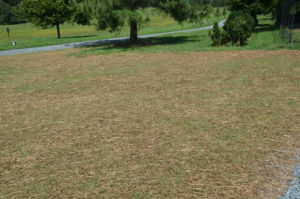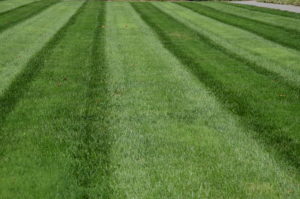The fall season is “spring-time” for home lawn care. This is a great opportunity to apply grass seed, fertilize, and eliminate weeds in cool season lawns. In Tennessee (USDA hardiness zones 6-7), cool season grasses (fescue, bluegrass and perennial rye) are fertilized in mid-September with a high nitrogen-based fertilizer, available at most garden centers. Warm season lawn grasses (Bermuda and zoysia grasses) are not fertilized in the fall as they’re entering winter dormancy.
At least every 3-5 years, have your soil tested. A soil sample is a valuable tool in maintaining a healthy lawn. Most state agricultural universities offer this service for a small fee. Call your local Extension office to obtain a soil sample. A soil analysis report will be mailed (or emailed) to your home within 2-3 weeks. This aids that you do not waste money by over-fertilizing.
Fall is an excellent time to over-seed bare or thin spots over your cool season lawn. Fall is better than spring to take on major reseeding jobs, to include establishing a new lawn. Cool moist autumn weather is an ideal time. Weed pressure is a lot less than in the spring months.
Lastly, many lawn weeds are easier to control in the fall. Don’t wait until spring. Chickweed, henbit, wild garlic (Allium), and deadnettle are cool season annuals that are easierto eliminate in the fall. Actively growing perennial weeds such as dandelions, clovers, plantains, thistles, and spurges can be selectively treated in established lawns with phenoxy-base products such as Trimec™ or Weed B-Gone™. Caution: do not apply these chemicals to newly seeded lawns. Always read the package directions before using.



 Posted in
Posted in 
